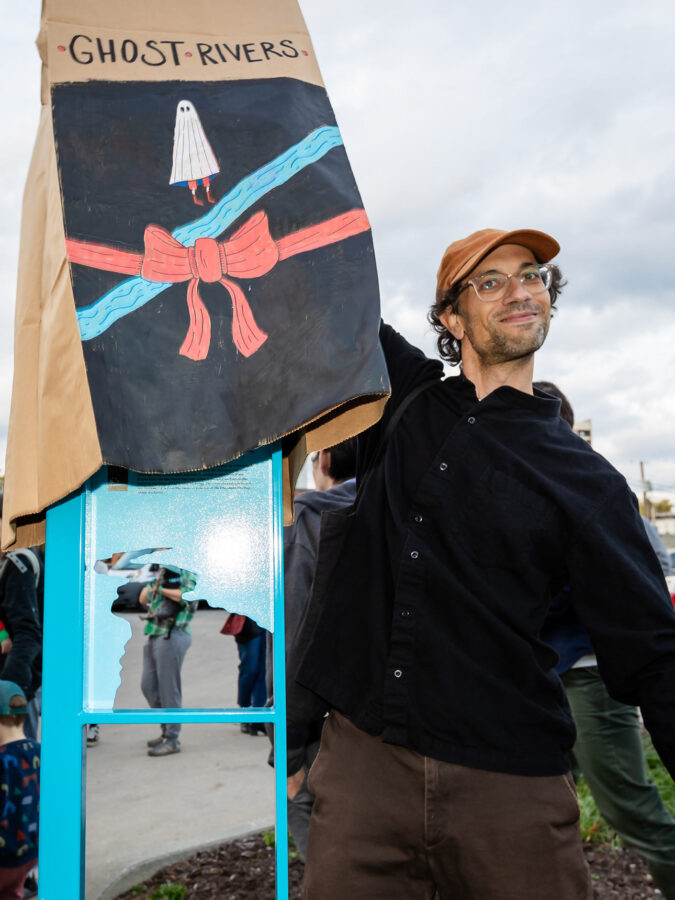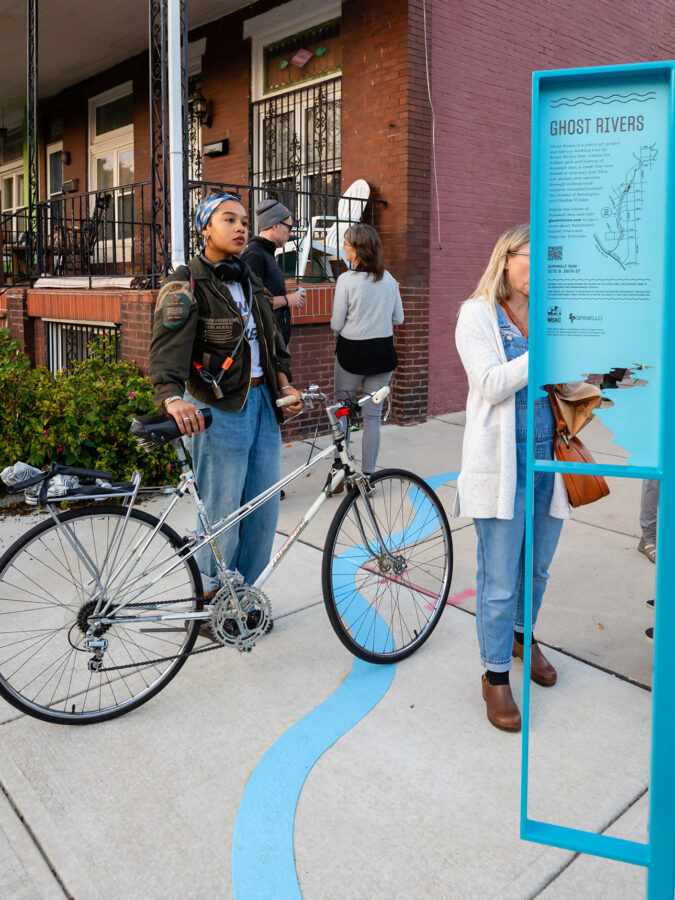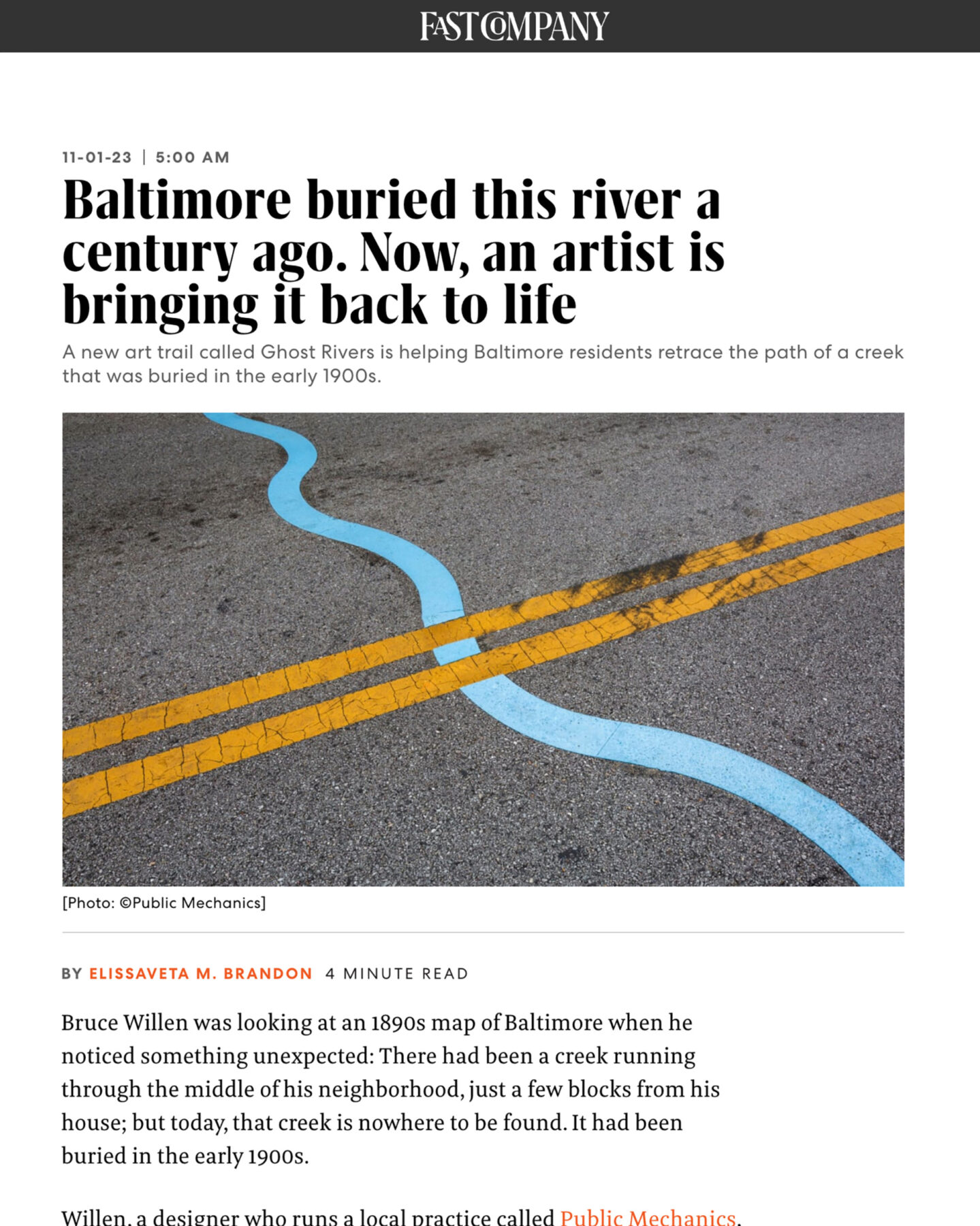A multi-site public art installation rediscovering buried streams and lost histories flowing below the streets of Baltimore.
Ghost Rivers
2020–2024
Powder-coated steel and aluminum signage, preformed thermoplastic, web publication, research, walking tours, community events
Location: Baltimore, MD

Ghost Rivers is a 1.5-mile-long permanent public art installation and walking tour that reveals the lost path and history of the buried stream Sumwalt Run, which now flows through underground culverts beneath the Remington and Charles Village neighborhoods. Through a series of permanent installations, wayfinding markers, and writings Ghost Rivers brings hidden landscapes and histories to the surface. Along the way the project draws connections between Baltimore’s watershed, its social history, and the evolving relationships between natural and human environments.

Mapmaking on the scale of a city
Ghost Rivers installations add a cartographic overlay to the physical environment, a meandering blue line that traces the lost path of Sumwalt Run across city streets and sidewalks. The pale blue color references the hues of waterways found on vintage maps and unites the Ghost Rivers installations across multiple sites. The form and color stands out among other roadway markings and a visually-crowded streetscape to help visitors follow the project through the neighborhood.






Narrative threads create deeper context
Sculptural interpretive signs feature cut-out river shapes that help visitors “see” the lost creek and a QR code that links viewers to additional digital content, including photos, historic imagery, and action-oriented resources for each site and topic. A project map on the signage, along with an interactive Google Map, help visitors to navigate a self-guided tour of Ghost Rivers installation sites.







Encouraging and rewarding exploration
Visitors may first stumble upon only one or two Ghost Rivers installations, and each site’s accompanying narrative is written as a standalone vignette. As viewers visit multiple sites, these narratives link together to illuminate larger themes within our social and natural landscapes.




Walking tours
The artist and Blue Water Baltimore have co-led a series of free guided tours of the project that immerse attendees in the past, present, and possible futures of Baltimore’s buried waterways.
An engaging multimedia website and interactive map serve as digital guides for visitors who wish to tour the sites on their own and for people around the world to experience Ghost Rivers virtually.




An extensive community engagement process
During project development, our engagement plan included community history workshops, public presentations, canvassing, in-person conversations, a collaborative chalk art drawing event, and one-on-one interviews that added voices of longtime neighborhood residents to the project. This broad engagement resulted in strong neighborhood support for Ghost Rivers.
We heralded the opening of the first nine sites with a ribbon-cutting and community celebration attended by hundreds of residents and project supporters and highlighted by a puppet procession with the Underground Water Goddess and her attendants.






“The installation is such a great addition to the neighborhood. Makes me proud to live here.”
Robin Jacobs, Remington resident



Ghost Rivers has also received extensive media coverage including features in Bloomberg CityLab, Fast Company, Colossal, Next City, Baltimore Sun, WYPR, The Architect’s Newspaper, Metropolis Magazine, and many others.



